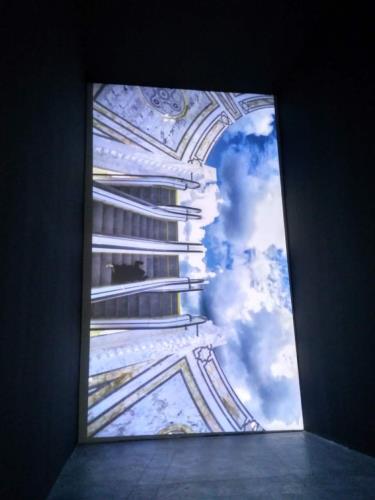A full time researcher in university and an amateur art commentator, Cheong obtained his master’s degree in Public Policy at Willy Brandt School of Public Policy at the University of Erfurt and is formerly a clarinettist of the Erfurt Philharmonic Orchestra in Germany. He loves classical music and now serves as conductor of the orchestra in Escola Choi Nong Chi Tai, by which he can connect art to everyday life. Cheong is also a book lover.

If you happen to be in Beijing now, you might visit “The New Normal: China, Art, and 2017”, an exhibition currently held at the Ullens Centre for Contemporary Art in 798 Art Zone until July 9. The exhibition presents works by 23 artists and groups from China and overseas, who uses art as a medium to explore the “state of exception” under the constant changes of the political environment and scrutiny. In contrast to “normal”, the “state of exception” illustrates how artists create artistic forms beyond the norms, a cornerstone of this exhibition. Undertaking a period of development in recent years, the 798 Art Zone has steered some artists away given its growing reputation and commercialisation. Amid this environment, there is an exhibition centre still fully committed to the art, the Ullens Centre for Contemporary Art, which leaves me with a great impression. What makes contemporary art interesting is how the audience is captivated and drawn by the meanings behind the art pieces albeit their apparent lack of face value.
“Black Friday” by Sophia Al-Maria explores the evolving lifestyle and value of residents on the Persian Gulf under the stunning urban and economic development over the past few decades, as well as the challenges imposed upon the traditions and history of the region. The large-scale shopping malls serve as secular temples of capitalism for people in this era of consumerism. As a projected video of shopping malls and majestic churches, “Black Friday” demonstrates the evolution of human faith from the pursuit of religion in the past to materialism, when the greatest value of mankind is embodied in pragmatism amid the marginalisation of idealism. While the video employs horror movie-style techniques to highlight its surrealistic ambience, the backward movement of bystanders on two escalators in the beginning and end of the work asks a question from the skeptic perspective of the artist: whether the advancement of capitalism represents the degeneration of humanity.
“Messiah - Fusion Dream of < J > < Z-772 > < 5 >” of Gao Lei shows his thorough thoughts in regards to the contemporary political process. The liquid flow from a metal basin at the top right of the pavilion to a syringe as the exit via a high-pressure water gun symbolises the enormous pressures arising from the convergence of public opinions. This process, transforming understanding at large to the ultimate value, might disintegrate the water gun and syringe. In the vicinity of this installation, there is a metal box with five drawers, representing the system of five working days a week, which is encircled with barbed wires to underscore the restraints of human life. The drawers could not be opened due to the rules established by mankind, highlighting the plight and conflicts in life. Follow a corridor in front of the syringe, you will find a gold door that represents power. This set of installations amounts to the desires and threats of mankind, as well as the new power arising from the outbreak. In a contemporary context, this work foreshadows the huge changes in norms induced by the chaotic social values.
Contemporary art allows in-depth interpretations of the works, which make it interesting and highly experimental, when artistic expressions serve as challenges to different aspects in real life in a manner similar to the relationship between a high wall and an egg that breaks against it. Reflecting the problems of real life, most contemporary art pieces object to the status quo with forward-looking visions, for example, the pieces in “The New Normal: China, Art, and 2017” unmistakably voice their contradiction to the real world. Yet, contemporary art, in the meanwhile, causes several problems like the inexplicability of artworks and the threshold of becoming artists. The high degree of freedom in creation also leads to the proliferation of arts. The solution to the problems is to permit credible art institutions to carry out capability assessments on artists and to select artworks, ensuring the public acceptance of high quality contemporary art pieces.